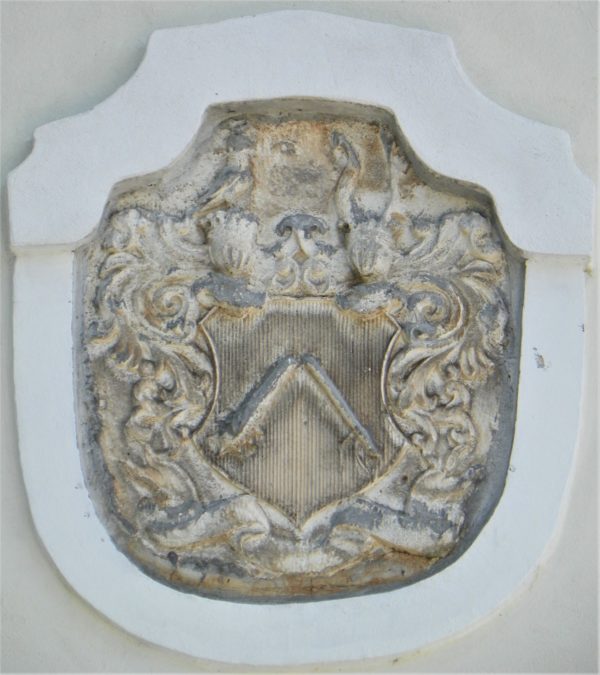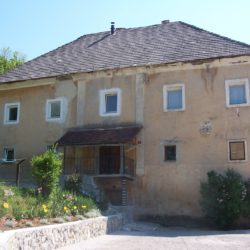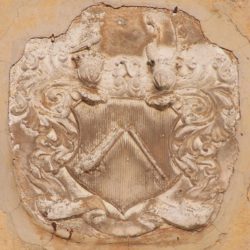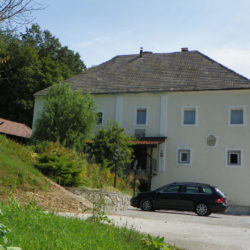
Coat of arms of the Fraenzl-Vesteneck family in Zapuže Mansion
MIRNA, ZAPUžE MANSION
Location of the coat of arms: façade
The façade of Zapuže Manor in Mirna, Lower Carniola, displays a coat of arms, in the literature erroneously ascribed to the Counts of Edling but, in fact, belonging to the more recent knightly family of Fraenzl-Vesteneck, whose members were the castellans of Zapuže and neighboring Mirna in the second half of the nineteenth century. The Fraenzls may be traced back to Johann Baptist, who died in 1807 in Klagenfurt, where he served as an official of the imperial-royal administration, responsible for collecting taxes. He was married to Henrietta von Vest, the daughter of the prominent physician Lorenz Chrysanth von Vest. Their marriage only produced a son, Moritz, because Johann Baptist died a few months after his birth. Moritz received his doctoral degree at the University of Vienna and, at the very young age of twenty-two, became a substitute teacher of political science at the same university. Later, he continued his career at the Theresian Military Academy, where he taught statistics and a few legal subjects, and he also served in Saint Petersburg and Warsaw. For his merit, he received the third-class Order of the Iron Crown in 1849 and that same year the rank of knighthood. The predicate of his choice was Vesteneck, derived from the family name of his mother or better-known grandfather.
In 1860, perhaps upon his retirement, he purchased two castles in Lower Carniola: Mirna and Zapuže. He probably restored and rebuilt the one in Zapuže, given the still-visible arms of the Knights von Fraenzl-Vesteneck on its façade as a common reminder of castle reconstruction. The Fraenzl-Vesteneck coat of arms features a broken morning star, the symbolism of which is unclear (another part of the arms features a golden ribbon below the escutcheon with the inscription EHRE UND RECHT, which is not depicted in the coat of arms in Zapuže). In 1867, Moritz Fraenzl had both castle buildings transferred to the name of his wife, Anna, née Schauenstein, who upon her husband’s death in 1875 transferred Mirna to her son and Zapuže to his younger brother Otto. However, they were not castellans for long because they sold their castles and estates in Lower Carniola a little over ten years later.
Sources:
Rugale, Mariano & Preinfalk, Miha: Blagoslovljeni in prekleti. Part 1: Plemiške rodbine 19. in 20. stoletja na Slovenskem. Ljubljana: Viharnik, 2010, pp. 60–65.
Stopar, Ivan: Grajske stavbe v osrednji Sloveniji. II. Dolenjska. Porečje Temenice in Mirne (vol. 3). Ljubljana: Viharnik, 2002, pp. 143, 144.



